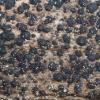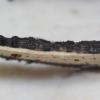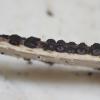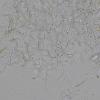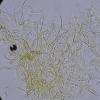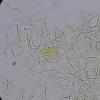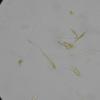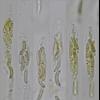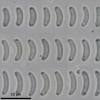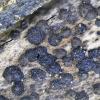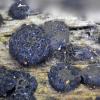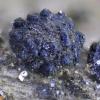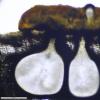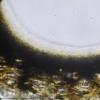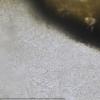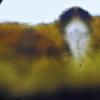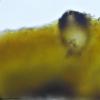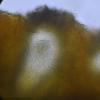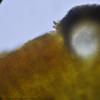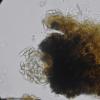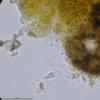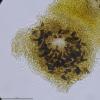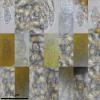
16-11-2025 21:09
 Robin Isaksson
Robin Isaksson
Anyone recognize this acc. to pictures.? Found on

14-11-2025 16:26
 Marian Jagers
Marian Jagers
Hello everyone, On dead wood of Cytisus scoparius

15-11-2025 23:22
Mario FilippaHello,this is what I think to be Hymenoscyphus mac

15-11-2025 20:25
 Riet van Oosten
Riet van Oosten
Hello, Found by Laurens van der Linde, Nov. 2025

14-11-2025 18:31
 Lothar Krieglsteiner
Lothar Krieglsteiner
Hello,can somebody provide me with a file of:Rothe

12-11-2025 09:25
 Viktorie Halasu
Viktorie Halasu
Hello, I need help with a pale terrestric Pseudom

11-11-2025 20:16
Bohan JiaHi,혻lastly I have found these tiny yellow decayin

09-11-2025 13:20
Hello.A tiny ascomycete, appearing as erupting gra
 Buenas tardes
Buenas tardesEl d챠a 7/6/2023 encontr챕 en Tenerife este Pyrenomycete bastante carbon찼ceo, muy peque챰o, de 200-300 micras de di찼metro, sobre madera de brezo (Erica arborea) o faya (Myrica faya). Las ascas tienen un pie largu챠simo, son IKI- y tienen 8 esporas cil챠ndrico alantoides con una g첬tula oscura en cada extremo. No he visto par찼fisis, y en su lugar hay una masa de hifas con terminaciones muy refringentes, sobre todo en IKI.
Medidas de las ascas:
(80,6) 95,3 - 136,2 (163,4) 횞 (4,3) 5 - 6 (6,3) 쨉m
N = 18;혻Me = 115,2 횞 5,4 쨉m ; Qe = 21,7
Medidas de las esporas (Medidas de punta a punta, no siguiendo la curvatura):
(5,6) 6,2 - 8,4 (8,8) 횞 (1,3) 1,5 - 2 (2,2) 쨉m
Q = (2,9) 3,4 - 5,1 (5,7) ; N = 45
Me = 7,3 횞 1,8 쨉m ; Qe = 4,2
En Canarias est찼n citadas Eutypella canariensis, E. euphorbiae y E. leprosa. De las 2 primeras pr찼cticamente no hay documentaci처n, y la tercera no se parece.
Gracias por vuestra ayuda.
Miguel 횁. Ribes혻

In Diatrypaceae, the morphology of the stroma is essential to the genus placement.
Regularly spaced single perithecia suggest Eutypa rather than Eutypella in which several perithecia are collectively erumpent though a common disc, with more or less prominent ostioles.
I don't see ostioles on your photos and it's only a guess that the small protuberances are not ostioles but perhaps superficial parasites, or maybe pycnidia. The hemispherical superficial part should be elucidated by sections in close-up to assess whether it is an ostiolar structure or what else.
Photos 6-7-8 recall a possible libertella-like asexual morph, I wonder if it comes from the perithecial contents or from the superficial pycnidia.
Your collection is really worth a thorough study.
Good luck!
Jacques

Interesting, two mushrooms in one.
Indeed, in the cuts that I have made I have not seen ostioles. I will try to make cuts and photos with more magnification of the superficial bumps that cover the perithecia. I will also try to take photos of the structure of the perithecia, although they were quite carbonaceous. All the micro photos that I have sent correspond to the interior of the perithecia that are seen at the bottom of the macro photos with cuts that I have sent, that is, the asci that I show and the possible libertella-like asexual morph of photos 6 -8 are of the same origin, from the interior of the perithecia, with complete certainty.
When I have more information I will send it again.
Thanks for your help Jacques. A hug.

In this message I send more photos of the Eutypa (and the Berlesiella on top), to see if it can be identified with this, and in the next message I send data on the Berlesiella.
Perithecia: 480 x 330 microns (height x width)
Miguel 횁. Ribes
Parece Capronia nigerrima, antes Berlesiella, un par찼sito com첬n sobre estromas de Eutypa.
Un abrazo.

Con la clave de Gernot Friebes (2012) llego a esa especie. Ya he visto tus l찼minas.
Muchas gracias. Un abrazo.

